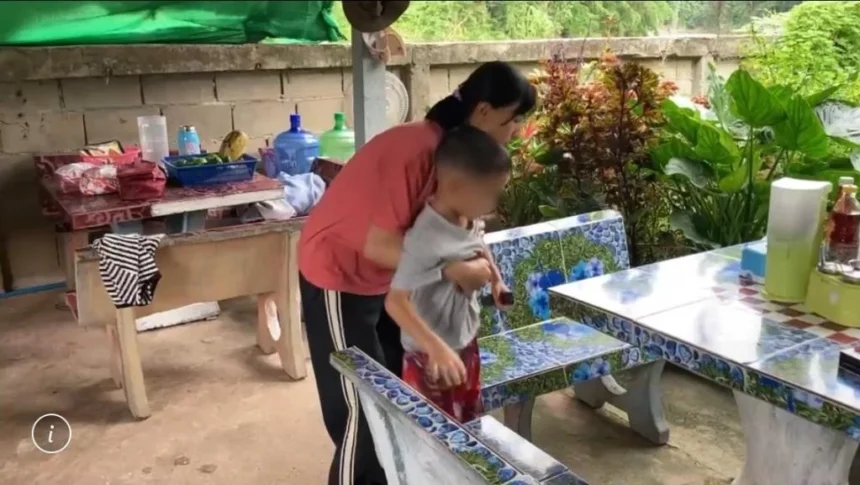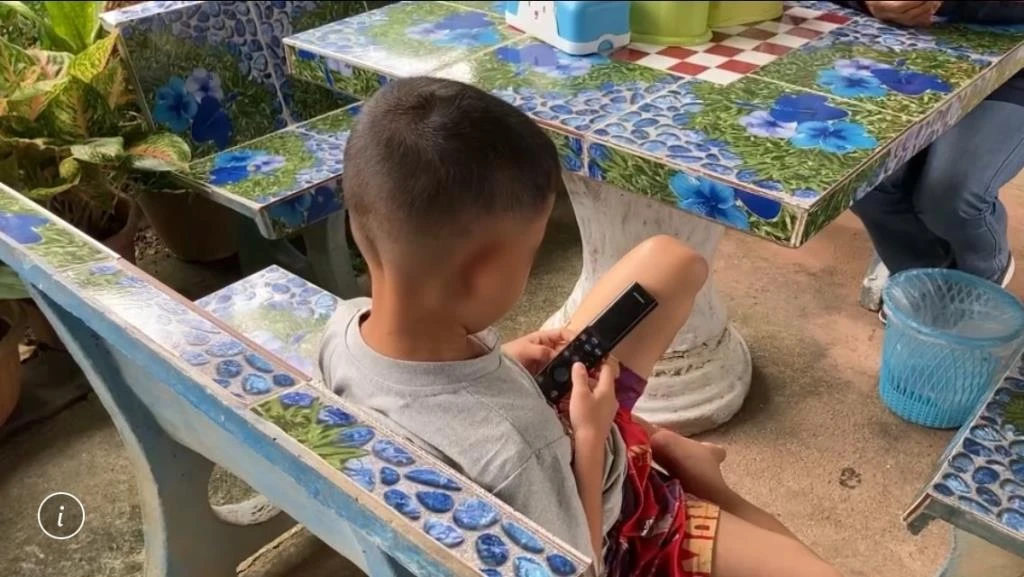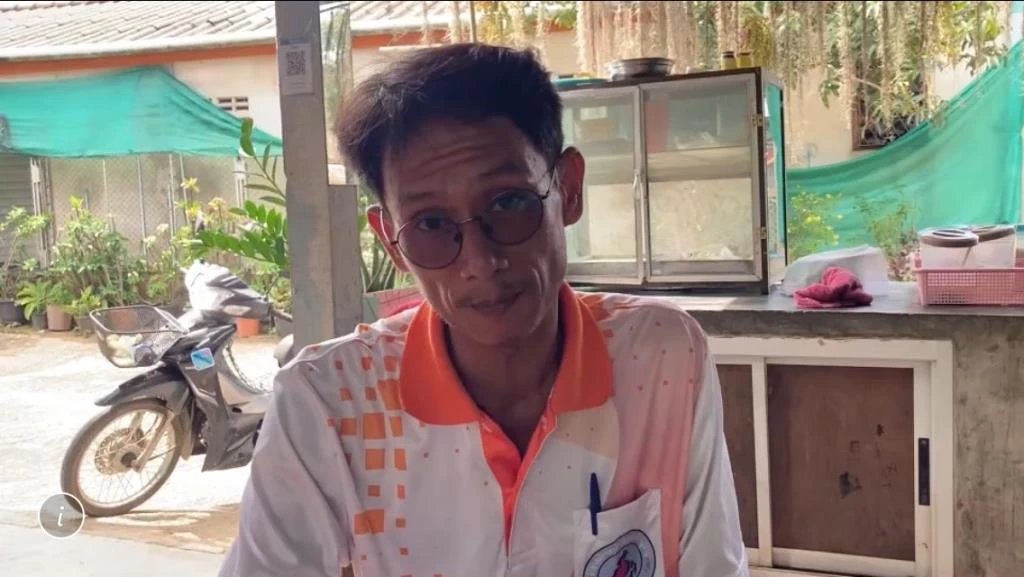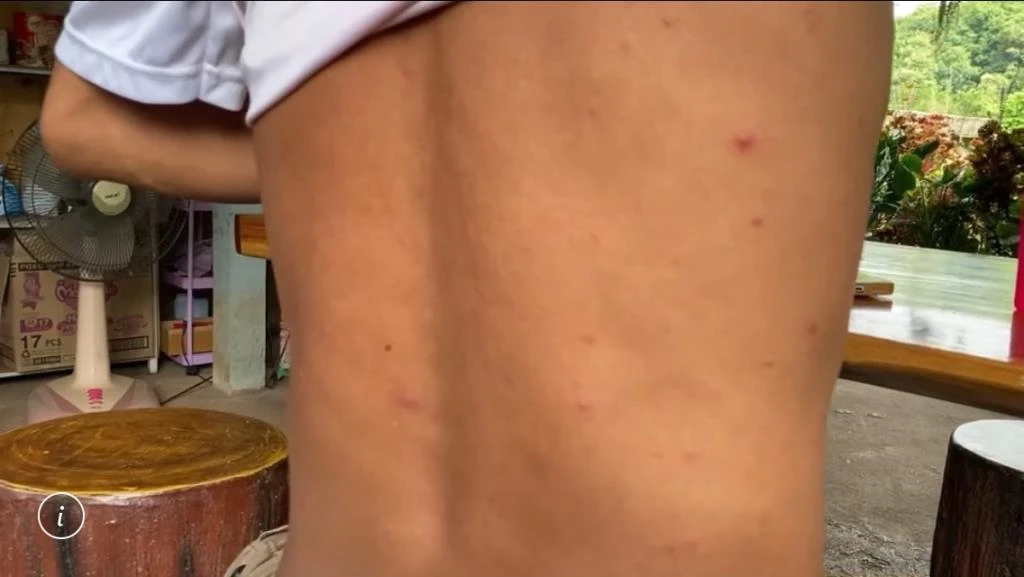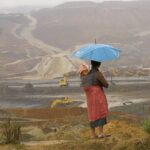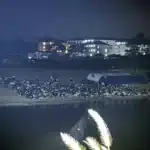CHIANG MAI – Residents of Thaton, Mae Ai, and those living along the Kok River in Chiang Mai are growing more concerned about arsenic and heavy metal contamination believed to have come from mines upstream in Wa State.
Recent tests found that a six-year-old boy, who had played in the Kok River, had higher-than-normal levels of arsenic and heavy metal contaminants in his urine. Local fishermen have also developed rashes and itchy bumps after contact with the river, but so far, no official agencies have stepped in to give a formal explanation or support to the community.
Villagers in Kaeng Sai Moon, Moo 14 in Thaton, as well as nearby communities along the Kok River, are worried about the impact of mining operations in southern Shan State, upstream of their villages. Tests on the river have shown traces of arsenic and heavy metals, sparking fears about water safety.
The local health volunteers and the community hospital in Thaton recently tested the urine of Tanatorn, a six-year-old student at Piang Luang School (Thaton). The lab results showed arsenic levels above the safe standard.
His parents, Mrs Jarm Kinglu, 28, and Mr Arun Kamai, 41, said health officials took urine samples for toxin testing several days ago. Later, a village assistant verbally told them the test found high levels of toxins in their son, but there was no official document to confirm this.
The news left the parents shocked and anxious, causing sleepless nights and worries about their son’s health. The child developed a fever, so they decided to keep him home from school for a few days.
His parents think he may have played in the Kok River before last year’s floods, when the water was still clear. Since hearing about toxic contamination, families have strictly forbidden their children from entering the river.
The parents urged authorities to take the matter seriously. If toxins are detected in children, they want follow-up tests and proper medical treatment if needed.
Mr Kop Kotkham, 42, a fisherman from Kaeng Sai Moon who has spent his life fishing in the Kok River, said he often gets rashes and itchy bumps on his body after working in the water. He has treated the symptoms with cream from the clinic, but the rash keeps returning.
He has never been tested for toxins himself. He mentioned that several agencies have asked him to provide fish samples for contamination checks, but no one has ever returned with results or feedback.
He and other fishermen who rely on the river have never been tested for heavy metals or other toxins, and he believes more should be done to protect the community.
Mr Kop added that if official agencies plan to do random testing, they should inform villagers in advance so people can prepare, like collecting urine samples with their names and addresses. He called for genuine help from authorities, not just temporary attention when high-ranking officials visit.
When the governor comes, many agencies show up, but once the visit ends, the support fades away. He noted that environmental officers have been seen monitoring the river, but have not educated the public about the risks of these toxins or given clear guidelines for staying safe.
Chiang Mai Provincial Public Health Office reported that heavy metals in the Kok River were found above safe levels, but tap water in local villages still met safety standards. Urine tests from selected villagers did not show dangerous levels of toxins.
Officials stressed that test results have not been hidden and urged residents to see a doctor if they experience unusual symptoms.
Dr Kittiphan Chalome, Assistant Public Health Officer of Chiang Mai, addressed the situation after the Environmental and Pollution Control Office 1 in Chiang Mai released surface water quality results for the Kok River in Thaton and Mae Na Wang, Mae Ai District. They found lead and arsenic levels above the standard in April.
Chiang Mai Public Health Water Tests
The Chiang Mai Public Health Office instructed the Mae Ai District Health Office to search for affected residents and set up a health monitoring system. So far, public hospitals in the area have not found patients with health issues linked to toxic contamination.
Water samples from nine villages continue to be tested at the Chiang Mai Health Centre 1 laboratory.
On 9 April 2015, tap water samples from nine villages were sent for testing, and no excessive heavy metals were found. On 20 April 2015, further tap water and urine samples from five villagers were collected. No arsenic or toxic heavy metals were detected, but coliform bacteria exceeded standards.
Follow-up urine tests on 28 May 2015 again found no dangerous heavy metal levels. The most recent samples were collected on 3 July 2015, with results still pending.
Although lead and arsenic levels in the Kok River exceed safety standards and could pose health risks, such as nausea, vomiting, severe stomach pain, seizures or fainting, headaches, fatigue, loss of appetite and muscle pain, the advice is to stop drinking or cooking with river water until it is declared safe.
Between April and June 2025, the Chiang Mai Provincial Public Health Office continued health checks for possible arsenic exposure in Mae Ai District. Two rounds of urine tests were performed on high-risk people, with all results below the maximum standard of 100 micrograms per litre. Health screening for local risk groups is ongoing, and hospitals keep monitoring for related illnesses.
Local hospitals and health volunteers, including those from sub-district health promotion hospitals, are working to keep residents informed. They communicate updates through village loudspeakers and local radio stations, making sure that facts are shared openly and the community knows how to protect itself.
Dr Kittiphan emphasised that the public should avoid drinking directly from the Kok River. Anyone who has been in contact with river water and develops a rash, headache, nausea, vomiting or diarrhoea should visit a doctor promptly.
Residents are encouraged to follow updates from official agencies, as health officers will continue to monitor the situation. Those worried about exposure can seek care at local hospitals under their healthcare rights. Dr Kittiphan also confirmed that no information on toxic contamination has been withheld from the public.




